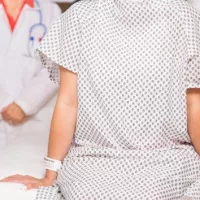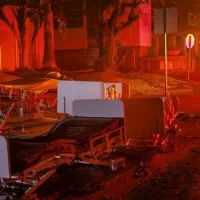
(NEW YORK) — A new double lung transplant technique was successful for two patients with lung cancer, Northwestern Medicine announced. The hospital said it’s leveraging that success into a new clinical program that will offer transplants to patients with end-stage lung cancer.
“Every morning when I open my eyes, like, I just can’t believe it, and life has different meaning now,” said Tannaz Ameli, the second person with lung cancer to receive the transplant, during a press briefing.
Lung cancer is currently the third most common type of cancer in the United States after skin cancer first, and breast cancer in women and prostate cancer in men second, according to the CDC. Yet more people die from lung cancer than any other type of cancer.
Treatment for lung cancer mostly depends on how much that cancer has spread. Patients may be treated with targeted medications, chemotherapy, radiation or surgery to remove the tumor. But those treatments don’t always work, and for some people, a lung transplant is their only option.
Single lung transplants have been successfully performed since the 1980s, and now, more than 1500 single lung transplants happen each year, according to the CDC. But lung transplants for lung cancer aren’t common.
That’s because there’s a high risk that cancer cells will spread from the lung into the rest of the body during the procedure — making it more likely the cancer will come back, said Dr. Ankit Bharat, chief of thoracic surgery and director of Northwestern Medicine Canning Thoracic Institute, in a press release.
When a patient needs both lungs replaced, the lungs are usually removed one after the other, Bharat said. If the first lung is transplanted while the other cancerous lung is still in the body, there’s a risk of the cancer spreading from that lung to the rest of the body, he said.
But Northwestern Medicine’s surgery team found a way to minimize that risk. Their approach allows surgeons to remove the cancerous lung from the body while the patient is hooked up to a bypass machine, which diverts their blood away from the heart and lungs. If blood doesn’t flow through the cancer during the surgery, the risk of the cancer spreading is less.
“We feel quite confident that we’ll be able to help some patients with no other options,” said Bharat. He said that the surgery involves “delicately taking both cancer-ridden lungs out at the same time along with the lymph nodes, washing the airways and the chest cavity to clear the cancer, and then putting new lungs in.”
He added, “These patients can have billions of cancer cells in the lungs, so we must be extremely meticulous to not let a single cell spill into the patient’s chest cavity or blood stream.”
The team at Northwestern Medicine first used the technique on Albert Khoury, a man from Chicago who came to them in 2021 after chemotherapy failed to treat his stage 4 lung cancer. His condition continued to worsen, and he ended up in the intensive care unit, according to a press release.
His doctor at Northwestern Medicine, oncologist Dr. Young Chae, said that a double lung transplant may be his only hope. Without one, Chae said Khoury wasn’t expected to live more than a year.
So, on Sept. 25, 2021, after 2 weeks on the transplant list, Khoury became the first person with lung cancer to have a successful double lung transplant.
One year later, Ameli, who lived in Minnesota, was also diagnosed with stage 4 lung cancer. She said that she tried chemotherapy, but just like for Albert Khoury, it wasn’t enough. Her husband had seen a video about Khoury’s procedure, she said, and he scheduled an appointment with a surgeon at Northwestern Medicine. She was a candidate — and received the second successful double lung transplant in July 2022.
“We’re so happy,” Ameli said at the press briefing. “I’m back. I did it. I made it.”
Because of those successes, Northwestern Medicine is launching a first-of-its-kind clinical program for people with end-stage lung disease.
The program plans to follow the outcomes of its first 75 patients who receive double lung transplants for lung cancer in a new research registry called DREAM (Double Lung Transplant Registry Aimed for Lung-limited Malignancies). While patients can receive a double lung transplant as a part of the clinical program without enrolling in the voluntary DREAM research registry, researchers hope to use the data to follow overall survival, disease-free survival and transplant rejection rates.
“I hope that all cancer patients can be as lucky as me and Albert were,” Ameli said. “Every day we wake up and we’re thankful for it.”
Aerial Petty, DO, is a family medicine resident at New York-Presbyterian/Columbia University Irving Medical Center and a contributor to the ABC News Medical Unit.
Copyright © 2023, ABC Audio. All rights reserved.















